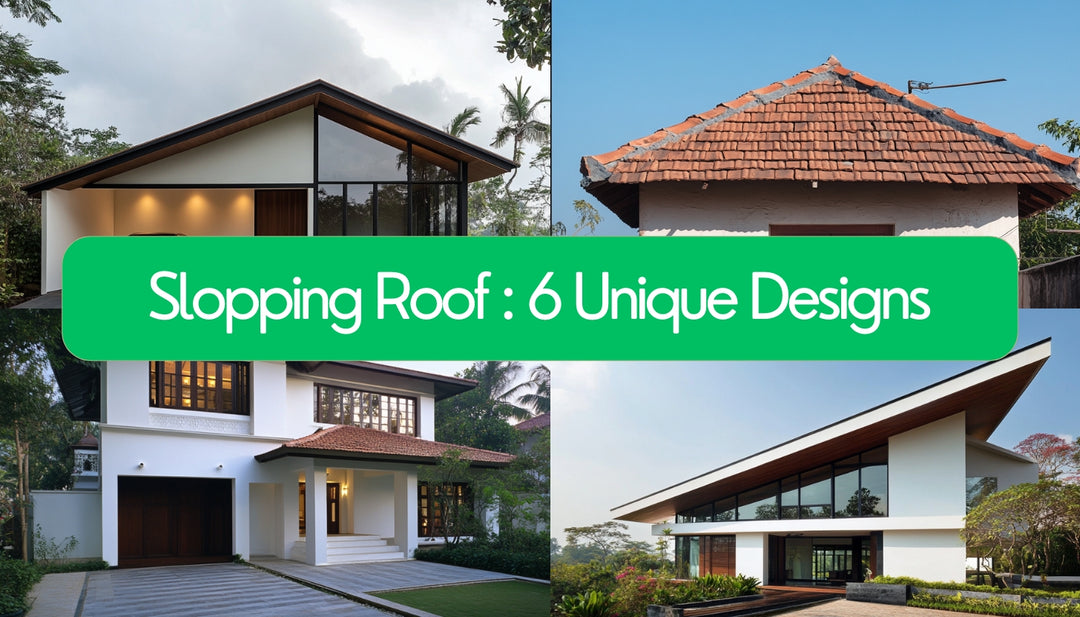Living Room Lighting Design Essentials

The living room is the heart of any home. It is where you entertain guests, relax with your family, watch TV, read books, and enjoy other activities. Therefore, it is essential to have a well-lit living room that creates a comfortable and inviting atmosphere.
However, lighting a living room can be challenging, especially in Indian apartments, where space and natural light are often limited. How do you choose the right lighting fixtures for your living room? How do you arrange them to create the best lighting effect? What are some common lighting mistakes to avoid?
This article will answer these questions and provide some essential lighting tips for your living room. We will cover the following topics:
- The three types of lighting: ambient, task, and accent
- The best lighting fixtures for every kind of lighting
- The optimal layout and placement of lighting fixtures
- The typical lighting mistakes and how to fix them
By the end of this article, you will have a clear idea of how to light up your living room and make it a cosy and stylish space.
The Three Types of Lighting
The first step to lighting a living room is to understand the three types of lighting: ambient, task, and accent. Every kind of lighting serves a different purpose and creates a different mood.
|
Type |
Purpose |
Mood |
Examples |
|
Ambient |
General illumination |
Soft and even |
Ceiling lights, floor lamps, wall sconces |
|
Task |
Focused illumination |
Bright and directional |
Table lamps, floor lamps, track lights |
|
Accent |
Decorative illumination |
Bright and contrasted |
Wall sconces, spotlights, LED strips |
Ambient Lighting
Ambient lighting is the general lighting that provides overall illumination to the room. The base layer of lighting allows you to see and move around the room. Ambient lighting should be soft and even without creating harsh shadows or glare.
The best lighting fixtures for ambient lighting are:
- Ceiling lights are the most common and versatile lighting fixtures for ambient lighting. They can be flush-mounted, recessed, or pendant lights. Ceiling lights can provide bright and even lighting to the whole room or create a focal point over a specific area, such as a dining table or a sofa.
- Floor lamps are tall and slender lighting fixtures that stand on the floor and cast light upwards. Floor lamps can create a warm, cosy ambience or highlight a corner or wall. Floor lamps can also be used as task lighting with adjustable arms or shades.
- Wall sconces are small and decorative lighting fixtures mounted on the wall and cast sideways. Wall sconces can create a soft and subtle glow in the room or accentuate a feature or artwork on the wall. Wall sconces can also be used as accent lighting if they have directional or coloured light.
Task Lighting
Task lighting is the focused lighting that provides extra illumination to a specific area or activity. The second layer of lighting allows you to perform tasks that require more light, such as reading, writing, working, or crafting. Task lighting should be bright and directional without creating eye strain or glare.
The best lighting fixtures for task lighting are:
- Table lamps are small and portable lighting fixtures that sit on a table or a desk and cast light downwards. Table lamps can provide adequate and adjustable lighting to a specific spot, such as a side table, a coffee table, or a workstation. Table lamps can also be used as accent lighting if they have decorative or coloured shades.
- Floor lamps: As mentioned above, they can also be used as task lighting if they have adjustable arms or shades. Floor lamps can provide flexible and movable lighting to a specific area, such as a sofa, a chair, or a bookshelf.
- Track lights: These are linear lighting fixtures mounted on the ceiling or the wall and have multiple adjustable heads that cast light in different directions. Track lights can provide versatile and customisable lighting to a specific area, such as a gallery wall, a fireplace, or a display cabinet.
Accent Lighting
Accent lighting is the decorative lighting that provides extra interest and drama to the room. The third layer of lighting allows you to highlight a feature or an element in the room, such as an artwork, a plant, a sculpture, or a texture. Accent lighting should be bright and contrasted without creating distraction or clutter.
The best lighting fixtures for accent lighting are:
- Wall sconces: As mentioned above, they can also be used as accent lighting if they have directional or coloured light. Wall sconces can create a dramatic and artistic effect in the room or add a pop of colour or a theme.
- Spotlights are small, focused lighting fixtures mounted on the ceiling or the wall and cast light in a narrow beam. Spotlights can create a sharp and intense effect in the room or draw attention to a specific object or detail.
- LED strips are flexible and thin lighting fixtures attached to a surface and cast light in a continuous line. LED strips can create a modern and futuristic effect in the room or add a subtle and ambient glow.
The Optimal Layout and Placement of Lighting Fixtures
|
Guideline |
Explanation |
Example |
|
Use a mix of lighting types and sources |
Creates a balanced and layered lighting effect |
Use ceiling lights for ambient lighting, table lamps for task lighting, and spotlights for accent lighting |
|
Use a dimmer switch or a remote control |
Adjusts the brightness and intensity of the lighting |
Use a dimmer switch to lower the brightness of the ceiling lights at night, or use a remote control to change the colour of the LED strips |
|
Use a colour temperature that matches the room |
Creates a reached or a contrasted colour effect |
Use warm white lighting for a cosy and intimate ambience, or use excellent white lighting for a bright and crisp ambience |
|
Use a focal point or a centre of interest |
Anchors the lighting in the room |
Use lighting to highlight and enhance a fireplace, a TV, a painting, or a sofa |
|
Use symmetry and harmony |
Creates a pleasing and orderly lighting effect |
Use pairs or groups of lighting fixtures that are identical or similar, or use lighting fixtures that are compatible and complementary |
The second step to lighting a living room is to arrange and optimally place the lighting fixtures. The layout and placement of lighting fixtures depend on the room's size, shape, and function, as well as the personal preference and style of the homeowner. However, there are some general guidelines to follow:
- Use a mix of different types and sources of lighting to create a balanced and layered lighting effect. Avoid relying on a single lighting source, such as a ceiling light, as it can create a flat and dull lighting effect.
- Use a dimmer switch or a remote control to adjust the brightness and intensity of the lighting according to the time of day, the mood, and the activity. Avoid using too bright or dim, which can cause eye fatigue or discomfort.
- Use a colour temperature that matches the theme and the tone. Colour temperature is measured in Kelvin (K) and ranges from warm white (2700K) to cool white (6500K). Warm white lighting creates a cosy and intimate ambience, while cool white lighting creates a bright and crisp ambience.
- Use a focal point or a centre of interest to anchor the lighting in the room. A focal point can be a large or prominent feature in the room, such as a fireplace, a TV, a painting, or a sofa. Use lighting to highlight and enhance the focal point and arrange the other lighting fixtures around it.
- Use symmetry and harmony to create a pleasing and orderly lighting effect. Symmetry means using pairs or groups of lighting fixtures that are identical or similar in shape, size, and style. Harmony means using lighting fixtures that are compatible and complementary in colour, material, and theme.
The Common Lighting Mistakes and How to Fix Them
The third step to lighting a living room is to avoid and fix the common lighting mistakes that can ruin the lighting effect. Some common lighting mistakes are
- Using lighting that is too bright or dim for the room. This can cause eye strain, glare, or shadows in the room. To fix this, use a dimmer switch or a remote control to adjust the brightness and intensity of the lighting according to the need and preference. Alternatively, use different types and sources of lighting to create a balanced and layered lighting effect.
- Using lighting that is too warm or too cool for the room. This can cause a mismatched or distorted colour effect in the room. To fix this, use a colour temperature that matches the room's theme and tone. Alternatively, use different types and sources of lighting to create a contrasted and varied colour effect.
- Using lighting that is too high or too low for the room. This can cause a disproportionate or unflattering lighting effect in the room. To fix this, use a height appropriate and suitable for the type and function of the lighting fixture. For example, use a ceiling light at least 7 feet above the floor, a table lamp at least 20 inches above the table, and a floor lamp at least 5 feet above the floor.
- Using lighting that is too scattered or too clustered in the room. This can cause a cluttered or sparse lighting effect in the room. To fix this, use a layout and a balanced and organised placement in the room. For example, use a focal point or a centre of interest to anchor the lighting in the room and arrange the other lighting fixtures around it. Alternatively, use symmetry and harmony to create a pleasing and orderly lighting effect.
Conclusion
Lighting a living room can be challenging, but it can also be fun and rewarding. By following the tips and guidelines in this article, you can create a well-lit living room that is comfortable, inviting, and stylish. Remember, the key to lighting a living room is to use a mix of different types and sources of lighting, adjust the brightness and intensity of the lighting, match the colour temperature of the lighting, use the optimal height and placement of the lighting fixtures, and avoid the common lighting mistakes. Happy lighting! 😊










